1). (New) Triumvirat - The Earthquake 62 AD
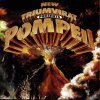 From their conceptual album, "Pompeii", released in 1977. Inspired by The Nice and Emerson, Lake & Palmer, this Cologne based German progressive rock trio, who were formed in 1970, were very well known in the US, where they reached the top 30 of the Billboard charts with their previous conceptual album, "Spartacus", in 1975.
From their conceptual album, "Pompeii", released in 1977. Inspired by The Nice and Emerson, Lake & Palmer, this Cologne based German progressive rock trio, who were formed in 1970, were very well known in the US, where they reached the top 30 of the Billboard charts with their previous conceptual album, "Spartacus", in 1975.
Keyboard player Jurgen Fritz, drummer Hans Bathelt and bassist/vocalist Hans Pape released their debut album, "Mediterranean Tales", on the progressive EMI Harvest label in January 1972, but it was only on the release of their 4th album, "Old Loves Die Hard", in 1976, that they became stars in their own country. Their second album, "Illusions On a Double Dimple", released in 1973, sold over 180,000 copies worldwide! Drummer Curt Cress, who'd appeared with Passort, Atlantis and many others, appeared on "Pompeii", as did bassist Dieter Petereit, together with vocalist Barry Palmer. This conceptual album, released under the name "The New Triumvirat" (previous bassist Dick Frangenberg had a veto on the name "Triumvirat". Fritz didn't have much luck with bassists. Not only did one of them nick the band's name, but Fritz went through six different ones on the band's seven albums!), took almost seven months to complete and involved a 20-piece orchestra, a horn section and a classical choir. The album sold over 100,000 copies and did very well in the German charts. Subsequent Triumvirat albums saw the band move sadly in a decidedly poppy direction.
2). Emerson, Lake & Palmer - Eruption
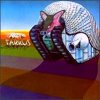 Keyboard player Keith Emerson had previously been with The V.I.P's, The T-Bones and The Nice. Bassist/guitarist/vocalist Greg Lake had just parted ways with King Crimson, and drummer Carl Palmer had been with Chris Farlowe's Thunderbirds, The Crazy World of Arthur Brown, and Atomic Rooster. They caused quite a stir when they played on the penultimate day of The Isle of Wight festival on 29 August 1970. Signing to Island Records, they released their self-titled debut in late 1970. It was a good album, well received by all, and it set the stage for greater things to come. "Tarkus", from which the featured track was taken, was a conceptual album about a mechanical armadillo which engages the Manticore, which was a mythical beast, in battle. Released in 1971, the album actually reached number one on the UK charts (for one week!), and number nine in the US. They went on to release a number of charting albums, including their arrangement of Mussorgsky's "Pictures At An Exhibition" in 1971, which established them as one of the country's leading progressive rock acts. They were also pretty popular on the live circuit, as can be heard on their live album, the triple "Welcome Back My Friends To The Show That Never Ends". The various members later got involved in solo projects, with Greg Lake working with Gary Moore and others. Carl Palmer was a founding member of Asia in 1982 and the great Qango in the nineties. ELP reformed in 1986 with respected drummer Cozy Powell replacing Palmer but nothing of note came of the reunion, nor of the Emerson, Lake & Palmer reformation in 1993.
Keyboard player Keith Emerson had previously been with The V.I.P's, The T-Bones and The Nice. Bassist/guitarist/vocalist Greg Lake had just parted ways with King Crimson, and drummer Carl Palmer had been with Chris Farlowe's Thunderbirds, The Crazy World of Arthur Brown, and Atomic Rooster. They caused quite a stir when they played on the penultimate day of The Isle of Wight festival on 29 August 1970. Signing to Island Records, they released their self-titled debut in late 1970. It was a good album, well received by all, and it set the stage for greater things to come. "Tarkus", from which the featured track was taken, was a conceptual album about a mechanical armadillo which engages the Manticore, which was a mythical beast, in battle. Released in 1971, the album actually reached number one on the UK charts (for one week!), and number nine in the US. They went on to release a number of charting albums, including their arrangement of Mussorgsky's "Pictures At An Exhibition" in 1971, which established them as one of the country's leading progressive rock acts. They were also pretty popular on the live circuit, as can be heard on their live album, the triple "Welcome Back My Friends To The Show That Never Ends". The various members later got involved in solo projects, with Greg Lake working with Gary Moore and others. Carl Palmer was a founding member of Asia in 1982 and the great Qango in the nineties. ELP reformed in 1986 with respected drummer Cozy Powell replacing Palmer but nothing of note came of the reunion, nor of the Emerson, Lake & Palmer reformation in 1993.
3). Argent - The Coming Of Kohoutek
 Taken from the band's 5th album, "Nexus", released in 1974. Argent were formed in 1969 by keyboard player Rod Argent, previous with The Zombies, together with ex-Roulettes members Bob Henrit on drums, Russ Ballard on guitars and vocals, and Rod's cousin, Jim Rodford, who played bass. They released their debut album on the CBS Record label. Similar in style to The Zombies, one of the tracks from the album, "Dance In The Smoke", appeared on the "Fill Your Head With Rock" CBS compilation, bringing the band to the attention of a much wider audience. They had a number of charting singles, notably "God Gave Rock 'n Roll to You" and "Hold Your Head Up", which has since been covered by Uriah Heep and others, and they became a very respected and appreciated band in their native UK. Rod Argent appeared in many keyboard polls and Russ Ballard built up a solid reputation as a very successful songwriter. When Ballard left to embark on a solo career, he was replaced by two guitarists, John Varty and John Verity. This line-up recorded a further two albums, "Circus" and "Counterpoint", both in 1975, but neither album managed to do anything for the band and they split in 1976.(Both albums have since finally been released on CD). Henrit and Rodford formed Phoenix before joining the Kinks.
Taken from the band's 5th album, "Nexus", released in 1974. Argent were formed in 1969 by keyboard player Rod Argent, previous with The Zombies, together with ex-Roulettes members Bob Henrit on drums, Russ Ballard on guitars and vocals, and Rod's cousin, Jim Rodford, who played bass. They released their debut album on the CBS Record label. Similar in style to The Zombies, one of the tracks from the album, "Dance In The Smoke", appeared on the "Fill Your Head With Rock" CBS compilation, bringing the band to the attention of a much wider audience. They had a number of charting singles, notably "God Gave Rock 'n Roll to You" and "Hold Your Head Up", which has since been covered by Uriah Heep and others, and they became a very respected and appreciated band in their native UK. Rod Argent appeared in many keyboard polls and Russ Ballard built up a solid reputation as a very successful songwriter. When Ballard left to embark on a solo career, he was replaced by two guitarists, John Varty and John Verity. This line-up recorded a further two albums, "Circus" and "Counterpoint", both in 1975, but neither album managed to do anything for the band and they split in 1976.(Both albums have since finally been released on CD). Henrit and Rodford formed Phoenix before joining the Kinks.
4). Yes - Close To The Edge
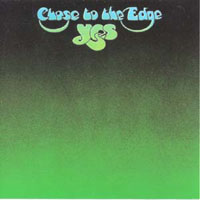 Not exactly one of the shortest progressive rock tracks ever written, but certainly one of the most respected and well known! This "edited for radio" version was the title track from Yes's 5th album, featuring arguably the band's best line-up, namely bassist/vocalist and co-founder Chris Squire, previously with The Syn, vocalist and co-founder Jon Anderson, previously in a beat band called The Warriors, drummer Bill Bruford, guitarist/vocalist Steve Howe, ex-The In Crowd and Bodast, who'd replaced Blodwyn Pig and Flash-bound Peter Banks, and keyboard wizard Rick Wakeman, who left The Strawbs to join Yes in 1971, replacing Tony Kaye, who would go on to form the excellent Badger. This line-up first appeared together on "Fragile", an album that appears in most prog rock lovers "best albums ever" list. "Fragile" was a classic, involving nine tracks, five of which were individual ideas of each member. "Close To The Edge", with its Roger Dean designed sci-fi cover, was a natural follow-up to "Fragile", and material from both albums was regularly featured during live shows. Bill Bruford later left to join King Crimson and he was replaced by Alan White. Other musicians who would later slot into the Yes line-up included Patrick Moraz from Refugee, who replaced Rick Wakeman and guitarist Trevor Rabin, who was involved in the Yes "revival" in 1983, when the charting "Owner of a Lonely Heart" from the "90125" album was released. Over the years the various members have embarked on various other projects, as well as solo careers, and all of them are still musically active today. The latest album, "Magnification", was one of the best they've ever recorded, and there are a number of Yes DVDs to choose from.
Not exactly one of the shortest progressive rock tracks ever written, but certainly one of the most respected and well known! This "edited for radio" version was the title track from Yes's 5th album, featuring arguably the band's best line-up, namely bassist/vocalist and co-founder Chris Squire, previously with The Syn, vocalist and co-founder Jon Anderson, previously in a beat band called The Warriors, drummer Bill Bruford, guitarist/vocalist Steve Howe, ex-The In Crowd and Bodast, who'd replaced Blodwyn Pig and Flash-bound Peter Banks, and keyboard wizard Rick Wakeman, who left The Strawbs to join Yes in 1971, replacing Tony Kaye, who would go on to form the excellent Badger. This line-up first appeared together on "Fragile", an album that appears in most prog rock lovers "best albums ever" list. "Fragile" was a classic, involving nine tracks, five of which were individual ideas of each member. "Close To The Edge", with its Roger Dean designed sci-fi cover, was a natural follow-up to "Fragile", and material from both albums was regularly featured during live shows. Bill Bruford later left to join King Crimson and he was replaced by Alan White. Other musicians who would later slot into the Yes line-up included Patrick Moraz from Refugee, who replaced Rick Wakeman and guitarist Trevor Rabin, who was involved in the Yes "revival" in 1983, when the charting "Owner of a Lonely Heart" from the "90125" album was released. Over the years the various members have embarked on various other projects, as well as solo careers, and all of them are still musically active today. The latest album, "Magnification", was one of the best they've ever recorded, and there are a number of Yes DVDs to choose from.
5). Chase - Reflections
Especially for the lovely Rosemary Royeppen, who is a presenter on Radio Today!
This previously unreleased studio track was taken from an album called "The Concert Series Volume 2", which was released on the Hallmark Chase Group label in 2001. Chase was the brainchild of trumpet player and songwriter Bill Chase, who'd previously featured with the likes of Woody Herman, Maynard Ferguson and others. He also featured with The Thundering Herd prior to forming his powerful nine piece jazz/rock outfit in 1970. Chase released three excellent albums ("Chase", "Ennea'' and "Pure Music") for Epic Records between 1971 and 1974 before Bill Chase and three other members of the band, namely keyboard player Wally Yohn, drummer Walter Clark and guitarist John Emma, were killed in an aircraft crash on August 9th 1974. It was a tragedy of note, notwithstanding the fact that Chase were really starting to establish themselves as one of the world's finest brass/horn/rock bands when the accident occurred. Chase fans will no doubt be very pleased to know that no less than FOUR live Chase albums have since seen the light, thanks to executive producer Tommy Martin's efforts in keeping the name of this awesome band and its leader alive. There are three volumes in the Concert Series, as well as a ''Live Forever" album, recorded in the Chicago area between 23 - 26 October 1973. A fourth studio album, "Watch Closely Now", featuring lead trumpet player Walt Johnson (who'd featured in The Temptations' backing band, no less!) in place of Bill Chase, was released in 1997. It's interesting to note that original members Ted Piercefield, Alan Ware and Jerry Van Blair (all on trumpet), vocalist Terry Richards and bassist Dennis Johnson, all appear on this 4th studio album! Our featured track, which was probably to be included on a mooted 4th studio album in the mid 70's, featured Wally Yohn on keys, Alan Ware, Rick Gardner, Jerry Van Blair and the great man, Bill Chase himself, on trumpets, Skip Weiser on trombone (a rarity in itself - you very seldom heard a trombone, or a sax, for that matter, on a Chase album!), Gerry Manfreddi on bass, Dave Ferguson on vocals and guitar and Joe Carrera on drums. If this brilliant, yet frustratingly short track was a promise of things to come on a new album, then Chase fans have all the more reason to feel aggrieved that this fantastic band and its leader was cut down in its prime. You unfortunately won't readily find the aforementioned "Concert Series", "Live Forever" or "Speak Softly Now" cds in your friendly local music store. If you want them, (or the first three studio albums, as well as Chase T-shirts, etc), you can contact Tommy Martin directly on tommar@great-music.com or you can visit www.great-music.com
6). Malo - Street Man
Malo was a Latin/brass/rock outfit put together by guitarist Jorge Santana (Carlos' brother) and vocalist Arcelio Garcia in San Francisco in 1971, the intention being to create a super-group of all the Latin Rock musicians in the San Francisco Bay Area. At times numbering as many as ten or more musicians, Malo's powerful sound was different to that of Santana in that the line-up included a serious horn section, which included, at various times, leading trumpet player Luis Gasca, as well as percussionists Coke Escovedo, Francisco Aguabella, Victor Pantoja and Richard Bean (of Sapo fame). Malo's first two albums, released on Warner Brothers, as were all of their albums, were very successful, spawning the hits "Suavecito" and "Nena". This third album, "Evolution", from which the featured track was taken, is arguably their best. Released in 1973, it featured keyboard player Ron DeMasi at his best. Not as well known as his illustrious brother, Jorge nonetheless demonstrated a very competent guitar style that helped cement this band above other Latin rock bands such as Tierra, Sapo, Macondo, Tango and Yaqui. Only the great El Chicano were on a par with Malo! By the time the fourth album, ''Ascencion", had come around, Arcelia Garcia had been replaced by Willie G (hopefully not related to Kenny!), from Thee Midniters. Also a very good album, the band had moved in a more commercial direction, although not losing the power and musicality that made them rule the roost between 1971 and 1974. Malo split in 1974 and would not resurface again until 1981, when Arcelio Garcia, as the only original member, would revive the band and release "Malo V". Garcia continued to tour and record sporadically under the Malo name, although official releases were few and far between. Malo appeared with the reformed Tierra and El Chicano on the "Latin Legends Live" double CD on Thump Records in the late 90's. Jorge Santana released two solo albums and later collaborated with his brother in Santana. (They also released a "Santana Brothers" album in 1994). If Latin Rock's your bag, you could do a lot worse than get yourself a couple of Malo albums. If you can't find any, look out for the GNP Records "Best of Malo" album, released in 1991.
7). Mandrill - Rollin' On
From their self-titled debut album, released in 1971. This New York based outfit was formed in the early 70's by the Wilson Brothers, Carlos on flute, trombone, guitar, percussion and vocals, Ric on tenor sax, percussion and vocals, and Louis on trumpet, flugelhorn, percussion and vocals. Joining the brothers were the dynamic Claude "Coffee" Cave on keyboards, Omar Mesa on guitars, Charlie Padro on drums and Bundie Cenac on bass. Although not as well known as Santana, Sly & The Family Stone, Earth, Wind & Fire and others, Mandrill could, and quite frequently did, blow these other groups away. They blended funk, calypso, rock, doo wop and salsa in a magical mixture that took audiences by surprise. Their debut album, released on the Polydor label, set the stage for the wild style that would follow: Jungle music, head music, street music, beach music, love music - it was all there, and it was exciting! Subsequent releases such as "Mandrill Is", in 1972, "Composite Truth" in 1973, and "Just Outside of Town", also in 1973, were all very well received, but the band still struggled to hit the big time. Although musically very competent, the band members tried to move with the times and further albums saw them move closer and closer into disco territory, which didn't do their creativity much justice. The band finally folded in the early 80's, having released about 11 albums. For movie buffs, their music also featured on the soundtrack to the 1979 gang warfare movie, "The Warriors".
8). Beggars Opera - Passacaglia
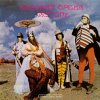 On the "Recommendations" page of the RockIt Scientist website, under Leon's favorite guitarists, you'll see the name Ricky Gardiner. Ricky Gardiner is responsible for the guitar solo on this fantastic track, with keyboard player Alan Park doing his bit on the organ too. Gardiner also one of the founding members of this Scottish band, from whose debut album, "Act One", released in 1971, the featured track was taken. The track also features vocalist Martin Griffiths (who's son, Phillip, has taken after his father and got involved in a number of great modern Prog bands, namely Alias Eye and Poor Genetic Material). The other members of the band were Marshall Erskine on bass and flute and Ray Wilson on drums. Evolving out of The System in the late 60's, Beggars Opera were signed to the Vertigo label. Their sophisticated brand of Classically influenced organ and guitar based progressive rock put them in a league of their own. For the next album, "Waters of Change", mellotron player Virginia Scott, later to marry Ricky Gardiner, joined the band and Gordon Sellar came in on bass. The awesome "Pathfinder", their third album, released in 1972, featured their stunning version of the Jimmy Webb classic "MacArthur Park". A fourth album for Vertigo, "Get Your Dog Off Me", saw ex-Writing On The Wall vocalist, the now late Linnie Patterson, replace Martin Griffiths and Colin Fairley replaced Raw Wilson on drums. The band had, by now, adopted an almost "West Coast" sound, although the Beggars Opera feel was still very much in evidence, especially on their version of "Classical Gas" and "Working Man". Two further albums, "Sagittary" in 1974 and "Beggars Can't Be Choosers" in 1979, were released, both on the German Jupiter label. Ricky Gardiner and Virginia Scott, who'd kept the band going, together with vocalist Pete Scott, finally called it a day, although a "different" version of the band, formed by Gordon Sellar, emerged in 1980, and released the final album, "Lifeline" that year. Alan Park later featured with Tiger and The Bliss Band before ending up as Cliff Richard's musical director. Colin Fairley joined String Driven Thing, and Ricky Gardiner and Virginia Scott released a number of albums.
On the "Recommendations" page of the RockIt Scientist website, under Leon's favorite guitarists, you'll see the name Ricky Gardiner. Ricky Gardiner is responsible for the guitar solo on this fantastic track, with keyboard player Alan Park doing his bit on the organ too. Gardiner also one of the founding members of this Scottish band, from whose debut album, "Act One", released in 1971, the featured track was taken. The track also features vocalist Martin Griffiths (who's son, Phillip, has taken after his father and got involved in a number of great modern Prog bands, namely Alias Eye and Poor Genetic Material). The other members of the band were Marshall Erskine on bass and flute and Ray Wilson on drums. Evolving out of The System in the late 60's, Beggars Opera were signed to the Vertigo label. Their sophisticated brand of Classically influenced organ and guitar based progressive rock put them in a league of their own. For the next album, "Waters of Change", mellotron player Virginia Scott, later to marry Ricky Gardiner, joined the band and Gordon Sellar came in on bass. The awesome "Pathfinder", their third album, released in 1972, featured their stunning version of the Jimmy Webb classic "MacArthur Park". A fourth album for Vertigo, "Get Your Dog Off Me", saw ex-Writing On The Wall vocalist, the now late Linnie Patterson, replace Martin Griffiths and Colin Fairley replaced Raw Wilson on drums. The band had, by now, adopted an almost "West Coast" sound, although the Beggars Opera feel was still very much in evidence, especially on their version of "Classical Gas" and "Working Man". Two further albums, "Sagittary" in 1974 and "Beggars Can't Be Choosers" in 1979, were released, both on the German Jupiter label. Ricky Gardiner and Virginia Scott, who'd kept the band going, together with vocalist Pete Scott, finally called it a day, although a "different" version of the band, formed by Gordon Sellar, emerged in 1980, and released the final album, "Lifeline" that year. Alan Park later featured with Tiger and The Bliss Band before ending up as Cliff Richard's musical director. Colin Fairley joined String Driven Thing, and Ricky Gardiner and Virginia Scott released a number of albums.
9). Warhorse - Burning
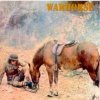 From their self-titled debut album, released on the Vertigo swirl label in 1970. Bassist and founder Nick Simper had also been a founding member of Deep Purple. He appeared on their first three albums before leaving to form Warhorse in 1970. The other members were Frank Wilson, ex-Velvett Fogg, on keyboards, Ashley Holt on vocals, Ged Peck on guitars and Mac Poole on drums. Their debut album, heavy on the guitars and organ, was a masterpiece of classy hard rock and great vocals from Ashley Holt. Guitarist Peter Parks later replaced Ged Peck for the band's second and last album, "Red Sea", which was released in 1972, also on the Vertigo swirl label. The band were around for a few more years, plying their trade in places like Germany, where they were very popular. Tracks for a mooted third album were recorded, but the band folded before the album was released. Ashley Holt joined Rick Wakeman's band, Nick Simper and Peter Parks formed the underrated Fandango and Mac Poole joined Broken Glass. Frank Wilson joined guitarist Alan Ross's band and later teamed up with keyboard player Melvin Gale to form Wilson Gale in 1980. Nick Simper was also in the revived Quartermass in the late 90's. Those "unreleased" Warhorse tracks, by the way, finally appeared as bonus tracks on the Angel Air and Akarma re-issues of "Warhorse" and "Red Sea" a few years ago. Both Warhorse albums are essential additions to the collection of anyone who professes to be a fan of rock music!
From their self-titled debut album, released on the Vertigo swirl label in 1970. Bassist and founder Nick Simper had also been a founding member of Deep Purple. He appeared on their first three albums before leaving to form Warhorse in 1970. The other members were Frank Wilson, ex-Velvett Fogg, on keyboards, Ashley Holt on vocals, Ged Peck on guitars and Mac Poole on drums. Their debut album, heavy on the guitars and organ, was a masterpiece of classy hard rock and great vocals from Ashley Holt. Guitarist Peter Parks later replaced Ged Peck for the band's second and last album, "Red Sea", which was released in 1972, also on the Vertigo swirl label. The band were around for a few more years, plying their trade in places like Germany, where they were very popular. Tracks for a mooted third album were recorded, but the band folded before the album was released. Ashley Holt joined Rick Wakeman's band, Nick Simper and Peter Parks formed the underrated Fandango and Mac Poole joined Broken Glass. Frank Wilson joined guitarist Alan Ross's band and later teamed up with keyboard player Melvin Gale to form Wilson Gale in 1980. Nick Simper was also in the revived Quartermass in the late 90's. Those "unreleased" Warhorse tracks, by the way, finally appeared as bonus tracks on the Angel Air and Akarma re-issues of "Warhorse" and "Red Sea" a few years ago. Both Warhorse albums are essential additions to the collection of anyone who professes to be a fan of rock music!
10). Atomic Rooster - I Can't Take No More
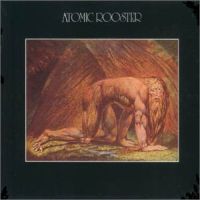 From "Death Walks Behind You", the second album from this great English group, who were formed by ex-Crazy World of Arthur Brown members, drummer Carl Palmer and keyboard player/vocalist Vincent Crane in 1969. Bass and vocal duties were handled by Nick Graham. The self-titled debut album was released in 1970. It did fairly well and reached the UK top 50. The band's promising start came to an abrupt end, though, when Carl Palmer left to become a founding member of Emerson, Lake & Palmer and Nick Graham departed for Skin Alley. Ex-Andromeda guitarist/vocalist John (Du) Cann and ex-Farm drummer Paul Hammond joined and this line-up appeared on our featured album. The track "I Can't Take No More" was intended as a single, but they decided to release "Tomorrow Night" as the single instead. This turned out to be a good move, as the track reached number 11 on the UK charts. A further single, "Devil's Answer", which appeared on the "Assortment" compilation, also did quite well, reaching number 4 on the charts. The line-up of Crane, Hammond and (Du) Cann stayed together for a further album, "In Hearing Of". Vocalist Peter French (of US band Cactus) joined the band for this album, before he left to form Leafhound. Hammond and (Du) Cann also left (to form Bullet, which eventually became Hard Stuff), leaving Vincent Crane to find new members and rebuild the band from scratch. Former Colosseum vocalist Chris Farlowe joined for the albums "Made In England" and "Nice 'n Greasy", but that's another story. Vincent Crane died on Valentine's Day in 1989.
From "Death Walks Behind You", the second album from this great English group, who were formed by ex-Crazy World of Arthur Brown members, drummer Carl Palmer and keyboard player/vocalist Vincent Crane in 1969. Bass and vocal duties were handled by Nick Graham. The self-titled debut album was released in 1970. It did fairly well and reached the UK top 50. The band's promising start came to an abrupt end, though, when Carl Palmer left to become a founding member of Emerson, Lake & Palmer and Nick Graham departed for Skin Alley. Ex-Andromeda guitarist/vocalist John (Du) Cann and ex-Farm drummer Paul Hammond joined and this line-up appeared on our featured album. The track "I Can't Take No More" was intended as a single, but they decided to release "Tomorrow Night" as the single instead. This turned out to be a good move, as the track reached number 11 on the UK charts. A further single, "Devil's Answer", which appeared on the "Assortment" compilation, also did quite well, reaching number 4 on the charts. The line-up of Crane, Hammond and (Du) Cann stayed together for a further album, "In Hearing Of". Vocalist Peter French (of US band Cactus) joined the band for this album, before he left to form Leafhound. Hammond and (Du) Cann also left (to form Bullet, which eventually became Hard Stuff), leaving Vincent Crane to find new members and rebuild the band from scratch. Former Colosseum vocalist Chris Farlowe joined for the albums "Made In England" and "Nice 'n Greasy", but that's another story. Vincent Crane died on Valentine's Day in 1989.
11). NDR Big Band (With Inga Rumpf) - It's a Man's World
 From "It's a Man's World", recorded live at Hamburg's famed "Fabrik" in January 1991. The NDR Big Band, sometimes numbering as many as 30 musicians, is one of Germany's most popular big bands. They've worked with many well known artists - in this case, ex-City Preachers/Frumpy and Atlantis singer Inga Rumpf. This is a great version of the James Brown classic, given the full-on big band treatment.
From "It's a Man's World", recorded live at Hamburg's famed "Fabrik" in January 1991. The NDR Big Band, sometimes numbering as many as 30 musicians, is one of Germany's most popular big bands. They've worked with many well known artists - in this case, ex-City Preachers/Frumpy and Atlantis singer Inga Rumpf. This is a great version of the James Brown classic, given the full-on big band treatment.
12). Cold Blood - Visions
 Fronted by vocalist Lydia Pense, Cold Blood were one of the US's best brass/rock outfits. Formed in San Francisco in the 1968, they released a total of six albums between 1970 and 1976 and were very popular on the live circuit, especially at venues such as impresario Bill Graham's Fillmore, where they played alongside the likes of Malo, Boz Scaggs, Santana and a host of others. The track was taken from their third album, "First Taste of Sin", which was released in 1972. The band split in the mid to late 70's and were largely dormant until recently. The new Cold Blood album, "Transfusion", was released a short while ago.
Fronted by vocalist Lydia Pense, Cold Blood were one of the US's best brass/rock outfits. Formed in San Francisco in the 1968, they released a total of six albums between 1970 and 1976 and were very popular on the live circuit, especially at venues such as impresario Bill Graham's Fillmore, where they played alongside the likes of Malo, Boz Scaggs, Santana and a host of others. The track was taken from their third album, "First Taste of Sin", which was released in 1972. The band split in the mid to late 70's and were largely dormant until recently. The new Cold Blood album, "Transfusion", was released a short while ago.
13). Affinity - Three Sisters
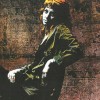 From their self-titled album, originally released on the Vertigo swirl label in 1970. We featured an instrumental track from the band a few weeks ago and have since had a few requests to hear what vocalist Linda Hoyle sounds like. She recorded just the one album with the band and recorded a solo album called "Pieces of Me" in 1971. She is now an Art Therapy teacher at the University of Western Ontario in Canada.(Refer to the playlist of 31st August 2005 for more info on this very talented band).
From their self-titled album, originally released on the Vertigo swirl label in 1970. We featured an instrumental track from the band a few weeks ago and have since had a few requests to hear what vocalist Linda Hoyle sounds like. She recorded just the one album with the band and recorded a solo album called "Pieces of Me" in 1971. She is now an Art Therapy teacher at the University of Western Ontario in Canada.(Refer to the playlist of 31st August 2005 for more info on this very talented band).
14). Brian Auger/Julie Tippetts - Git Up
Keyboard player Brian Auger and vocalist Julie Tippetts (then Julie Driscoll) had formed The Trinity back in the mid 60's. They recorded three albums together before she left the band in 1968 during an American tour and after starring in a TV play called "The Season of The Witch", she faded from the limelight. Auger subsequently formed The Oblivion Express. She married Keith Tippett and made a solo album under her maiden name called "Sunset Glow" in 1976. She then reunited with Brian Auger in 1978 and they recorded this album, called "Encore" that year.
15). Renaissance - Can You Understand
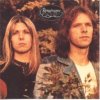 From "Ashes Are Burning", in 1973, their fourth album in total, and second to feature vocalist Annie Haslam, who replaced original vocalist Jane Relf the previous year. The original Renaissance was formed by ex-Yardbirds vocalist and harp player Keith Relf and drummer Jim McCarty in England in 1969. Initially calling themselves Together, they released two singles before recruiting ex-Nashville Teens keyboard player John Hawken and bassist Louis Cennamo, together with Relf's sister Jane. They released their promising self-titled debut album on the Island label in 1969. A further album, entitled "Illusion" (the name of the group that all of the members would go onto form), was recorded under the Renaissance name in 1972 (it was only released in the 90's!).That same year, the original Renaissance folded, with Illusion being formed. A totally new Renaissance, with members Terry Sullivan (drums and vocals), Michael Dunford (guitar and vocals), John Tout (keyboards and vocals), Jon Camp (bass and vocals) and Annie Haslam on vocals, together with songwriting skills of poetess Betty Thatcher, was formed, and this line-up recorded the critically acclaimed "Prologue" album in 1972. "Prologue'' attracted far more attention in the US than it did in the UK, and, as a result, the band made the US their base. The follow-up to "Prologue", "Ashes Are Burning", featured Wishbone Ash's Andy Powell, who played guitar on the title track. Renaissance went on to record many great albums and had a number of minor hits, namely "Carpet Of The Sun" and "Northern Lights" before folding in the mid 80's. Michael Dunford revived the band and recruited Stephanie Adlington on vocals, and a new album, "The Other Woman", was released. Annie Haslam became a successful solo singer and is widely regarded and respected as one of the UK's greatest female singers. She returned to Renaissance in 2000 and they recorded the excellent ''Tuscany" album that year.
From "Ashes Are Burning", in 1973, their fourth album in total, and second to feature vocalist Annie Haslam, who replaced original vocalist Jane Relf the previous year. The original Renaissance was formed by ex-Yardbirds vocalist and harp player Keith Relf and drummer Jim McCarty in England in 1969. Initially calling themselves Together, they released two singles before recruiting ex-Nashville Teens keyboard player John Hawken and bassist Louis Cennamo, together with Relf's sister Jane. They released their promising self-titled debut album on the Island label in 1969. A further album, entitled "Illusion" (the name of the group that all of the members would go onto form), was recorded under the Renaissance name in 1972 (it was only released in the 90's!).That same year, the original Renaissance folded, with Illusion being formed. A totally new Renaissance, with members Terry Sullivan (drums and vocals), Michael Dunford (guitar and vocals), John Tout (keyboards and vocals), Jon Camp (bass and vocals) and Annie Haslam on vocals, together with songwriting skills of poetess Betty Thatcher, was formed, and this line-up recorded the critically acclaimed "Prologue" album in 1972. "Prologue'' attracted far more attention in the US than it did in the UK, and, as a result, the band made the US their base. The follow-up to "Prologue", "Ashes Are Burning", featured Wishbone Ash's Andy Powell, who played guitar on the title track. Renaissance went on to record many great albums and had a number of minor hits, namely "Carpet Of The Sun" and "Northern Lights" before folding in the mid 80's. Michael Dunford revived the band and recruited Stephanie Adlington on vocals, and a new album, "The Other Woman", was released. Annie Haslam became a successful solo singer and is widely regarded and respected as one of the UK's greatest female singers. She returned to Renaissance in 2000 and they recorded the excellent ''Tuscany" album that year.
16). Lucifer's Friend - Spanish Galleon
 This German hard/progressive rock outfit was formed by English vocalist John Lawton in early 1970. Evolving out of Asterix and other German bands such as German Bonds and The Giants, the original Lucifer's Friend line-up included guitarist Peter Hesslein, Joachim Reitenbach on drums and percussion, Dieter Horns on bass and vocals, Peter Hecht on organ and John Lawton on vocals. Their self-titled debut album, released on the Philips label in November 1970, was a powerful introduction to a band that showed much promise. Their heavy guitar and organ-based prog rock was similar in style to Deep Purple and Uriah Heep. They then moved to Vertigo Records and released two further albums "Where The Groupies Killed The Blues" in 1972 and 'I'm Just a Rock 'n Roll Singer" in 1973 before embarking on this elaborate album that involved a 30-plus piece horn and string section. "Banquet", from where our featured track was taken, was released in 1974. Excellent in parts, the album wasn't as successful as they would have liked, although POP magazine described it as "an orchestral rock banquet for musical gourmets". After recording a further album, "Mind Exploding" in 1976, John Lawton was offered the vocal position in Uriah Heep, where he stayed for three albums, "Firefly", "Innocent Victim" and "Fallen Angel". His replacement was ex-Spinning Wheel vocalist Mike Starrs (who also featured with Colosseum 2). After a few more albums for the Elektra label, Lucifer's Friend finally split in the early 80's. The other members of the group worked as session players with the likes of the James Last Orchestra, whilst Lawton later formed Rebel and ZAR. In recent times, he's featured with Gunhill, Ken Hensley (from Uriah Heep), Steve Dunning and Uriah Heep, at their Magician's Birthday party bashes. He also released a very good blues album a few years ago.
This German hard/progressive rock outfit was formed by English vocalist John Lawton in early 1970. Evolving out of Asterix and other German bands such as German Bonds and The Giants, the original Lucifer's Friend line-up included guitarist Peter Hesslein, Joachim Reitenbach on drums and percussion, Dieter Horns on bass and vocals, Peter Hecht on organ and John Lawton on vocals. Their self-titled debut album, released on the Philips label in November 1970, was a powerful introduction to a band that showed much promise. Their heavy guitar and organ-based prog rock was similar in style to Deep Purple and Uriah Heep. They then moved to Vertigo Records and released two further albums "Where The Groupies Killed The Blues" in 1972 and 'I'm Just a Rock 'n Roll Singer" in 1973 before embarking on this elaborate album that involved a 30-plus piece horn and string section. "Banquet", from where our featured track was taken, was released in 1974. Excellent in parts, the album wasn't as successful as they would have liked, although POP magazine described it as "an orchestral rock banquet for musical gourmets". After recording a further album, "Mind Exploding" in 1976, John Lawton was offered the vocal position in Uriah Heep, where he stayed for three albums, "Firefly", "Innocent Victim" and "Fallen Angel". His replacement was ex-Spinning Wheel vocalist Mike Starrs (who also featured with Colosseum 2). After a few more albums for the Elektra label, Lucifer's Friend finally split in the early 80's. The other members of the group worked as session players with the likes of the James Last Orchestra, whilst Lawton later formed Rebel and ZAR. In recent times, he's featured with Gunhill, Ken Hensley (from Uriah Heep), Steve Dunning and Uriah Heep, at their Magician's Birthday party bashes. He also released a very good blues album a few years ago.
17). Uriah Heep - Salisbury
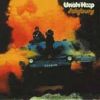 This excerpt from the epic title track of their experimental second album was a very brave and ambitious project for the band to attempt so early into their career. Involving brass and woodwind instruments, the track (and album, for that matter) included what must rate as guitarist Mick Box's finest guitar solos. "Salisbury", released in 1971, was their second and last album to be released on Vertigo Records before they moved over to Gerry Bron's Bronze label later that year. The band's roots go back to two late sixties bands, namely The Stalkers (later Spice), which featured Box, vocalist David Byron and bassist Paul Newton, and The Gods, which was formed by keyboard player and guitarist Ken Hensley, and which also featured Newton, as well as future Uriah Heep drummer Lee Kerslake, who would join the band in 1972. Hensley had also been in Head Machine (reputedly under the name of Ken Leslie!) and Toefat. Taking the name from a character in the Charles Dickens novel "David Copperfield", Box, Byron and Hensley formed Uriah Heep in 1970. Their classic "Very 'eavy Very 'umble" album, released in 1970, was an absolute corker for a debut album! Hensley's Hammond and Box's famed wah wah guitar, especially on the timeless "Gypsy", were phenomenal. David Byron was acclaimed as one of England's best vocalists. "Salisbury" featured ex-Bakerloo drummer Keith Baker, who replaced Elton John-bound original drummer Nigel Olsson. Uriah Heep's fortunes took a turn for the better after their third album, "Look At Yourself" in 1971: Lee Kerslake came in on drums and Gary Thain (ex-Keef Hartley Band) came in on bass, and this line-up of Box, Thain, Hensley, Byron and Kerslake remained stable for a number of years and albums. After many line-up changes and albums, the core of Uriah Heep has centred around Mick Box, who has kept this legendary British band going through what must've been pretty difficult times. The current line-up includes ex-Spider From Mars Trevor Bolder on bass, Bernie Shaw on vocals, Lee Kerlake on drums, Phil Lanzon on keyboards and Mick Box on guitars. They are undoubtedly one of rock's finest and longest surviving bands, still playing the gigs to packed venues and releasing the albums (and dvds!). Mick Box as a guitarist has very few equals.
This excerpt from the epic title track of their experimental second album was a very brave and ambitious project for the band to attempt so early into their career. Involving brass and woodwind instruments, the track (and album, for that matter) included what must rate as guitarist Mick Box's finest guitar solos. "Salisbury", released in 1971, was their second and last album to be released on Vertigo Records before they moved over to Gerry Bron's Bronze label later that year. The band's roots go back to two late sixties bands, namely The Stalkers (later Spice), which featured Box, vocalist David Byron and bassist Paul Newton, and The Gods, which was formed by keyboard player and guitarist Ken Hensley, and which also featured Newton, as well as future Uriah Heep drummer Lee Kerslake, who would join the band in 1972. Hensley had also been in Head Machine (reputedly under the name of Ken Leslie!) and Toefat. Taking the name from a character in the Charles Dickens novel "David Copperfield", Box, Byron and Hensley formed Uriah Heep in 1970. Their classic "Very 'eavy Very 'umble" album, released in 1970, was an absolute corker for a debut album! Hensley's Hammond and Box's famed wah wah guitar, especially on the timeless "Gypsy", were phenomenal. David Byron was acclaimed as one of England's best vocalists. "Salisbury" featured ex-Bakerloo drummer Keith Baker, who replaced Elton John-bound original drummer Nigel Olsson. Uriah Heep's fortunes took a turn for the better after their third album, "Look At Yourself" in 1971: Lee Kerslake came in on drums and Gary Thain (ex-Keef Hartley Band) came in on bass, and this line-up of Box, Thain, Hensley, Byron and Kerslake remained stable for a number of years and albums. After many line-up changes and albums, the core of Uriah Heep has centred around Mick Box, who has kept this legendary British band going through what must've been pretty difficult times. The current line-up includes ex-Spider From Mars Trevor Bolder on bass, Bernie Shaw on vocals, Lee Kerlake on drums, Phil Lanzon on keyboards and Mick Box on guitars. They are undoubtedly one of rock's finest and longest surviving bands, still playing the gigs to packed venues and releasing the albums (and dvds!). Mick Box as a guitarist has very few equals.
18). Heavy Metal Horns - ESP
With a name like Heavy Metal Horns, this band just HAS to be good! A US brass/rock outfit, they would appear to have released four albums. The featured track was taken from their 1994 album entitled "Horns In The House". They're a nine piece outfit who's Tower of Power influences are very apparent.
19). Puzzle - State of Mind
From "The Second Album" in 1974. Strangely enough, very little, if any, information about this US brass/jazz/rock outfit can be found, despite searches in books and on the Internet. Both of their excellent albums were released on the Motown label but were seemed destined for the bargain bins almost as soon as they'd been released. Drummer John Livigni had a tremendous voice and the rest of the sextet were very competent musicians.
20). Afroskull - It
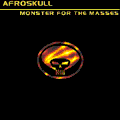 From "Monster For The Masses", released in 2000. Thanks to Vivian Bannatyne for the introduction to this unbelievably powerful US brass rock outfit! Don't have too much info on the band, but picture combining the rhythm and soul of Mandrill with the brute power of Heaven and you have Afroskull. They're a six piece outfit, augmented by a killer horn section! According to their website, www.afroskull.com, a live bootleg album called "Afroskull Does Black Sabbath" is also available. Must be awesome!!
From "Monster For The Masses", released in 2000. Thanks to Vivian Bannatyne for the introduction to this unbelievably powerful US brass rock outfit! Don't have too much info on the band, but picture combining the rhythm and soul of Mandrill with the brute power of Heaven and you have Afroskull. They're a six piece outfit, augmented by a killer horn section! According to their website, www.afroskull.com, a live bootleg album called "Afroskull Does Black Sabbath" is also available. Must be awesome!!